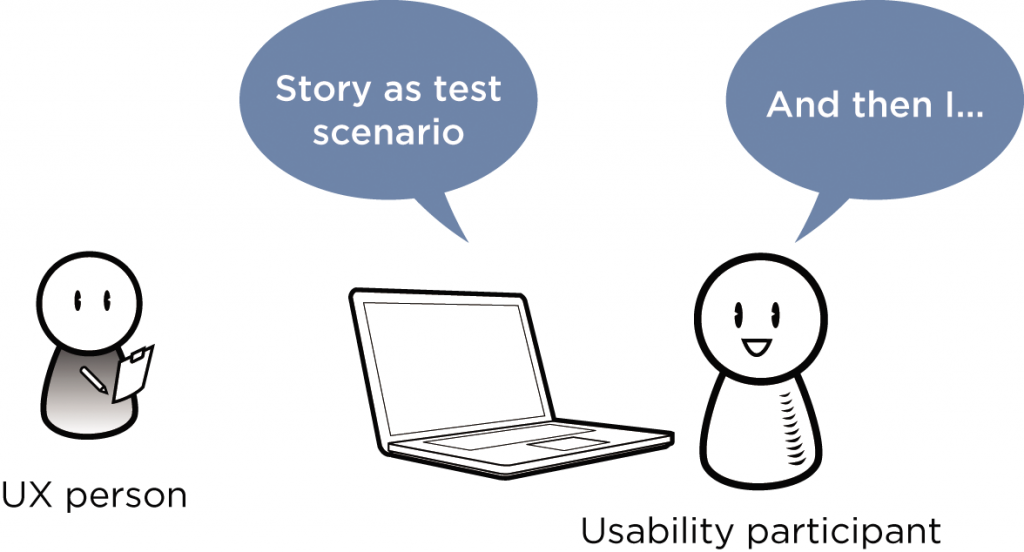MAKE THE MOST OF OPPORTUNITY
Whatever type of organisation you are running, you most likely have a business website and no doubt do everything you can to get the right people to visit your site.
When they get there, then what? Is your website working for against your overall marketing efforts? How likely is it that somebody will buy from you or engage with your brand once they get to your site?
This article is all about the user experience (UX) once they get to your site, and it has a major influence on how the site should be designed.
The best way of thinking about how to improve the user experience is to break down the whole process into steps and stages in a journey. These steps are as follows:Who is your ideal visitor?
Let’s take a closer look aе at him.
WHO IS VISITING YOUR SITE? USER PERSONAS
The most important part of understanding user experience is understanding the user. You need a vivid feel for the people you want to attract to your site. It needs to be detailed enough to predict reactions, emotional responses, likely behaviours and expectations.
Persona DO’s and DON’T’s
DO give the persona a real face. This should really be a photograph that you take from a stock image source.
DON’T use a cartoon image or illustration, if you can avoid it.
DO give the persona a real name. You are dealing with real people. Try to create something that reflects real people.
DON’T use a nickname or highly unlikely fictional name.
Sometimes you don’t even need to spend money. I got this image from a free site.
DO use various analytical tools to establish the behaviour of your current users by measuring relevant data. How long do they stay on a page before moving? Where do they go? Do they bounce off some pages more than others?
DON’T overdo it. Try to focus on relevant data. Your persona summary is only going to be as detailed as is useful for the task in hand.
Remember that this persona is going to act as a reference in many aspects of your marketing process. At the forefront of many decisions you make will be the question of what “Persona name” would do here or how “Persona name” would react to that, for example, and to ensure that the experience you deliver will be the one that will appeal to that persona the most.
Therefore we need to define useful and relevant qualities about the person. Starting with age, socioeconomic status and other simple demographics, you also want some insight into their personality traits. Are they adventurous or conservative (with a small “c”), sporty or sedentary, educated etc?
WHAT DOES “JOHN SMITH” WANT TO DO ON YOUR SITE? USER STORIES
A user story starts with the type of user such as a house hunter, a finance director or a plumber for example. Then we include the feature they may ask for. Finally, we define the goal they want to achieve.
Here are some examples:
As a house seller (type of user), I want to be able to find my nearest estate agent easily (feature) so I can contact them for a valuation (goal).
As a sales manager (user type), I want to be able to source candidates by area (feature) so I can check out the CVs of candidates locally (goal).
So what we have, here, is:
- As a <usertype> I want to <feature/function> so I can <goal>.
- User stories are not only applicable to design. They also come in handy for other marketing efforts.
WHY ARE USER STORIES USEFUL?

Generating user stories allows you to identify and focus on the elements of user experience that count. They keep your attention fixed on what counts – the real motivations and goals of your users, your customers and potential customers.
Make your user stories as simple as possible, avoiding jargon so that anybody can understand them. List them in a spreadsheet, using columns for “user type”, “feature” and “goal”.
Defining the various user scenarios allows you to really emphasise with your users. You are putting context on the visit to your site, understanding the specific set of circumstances that led them to take that action.
By empathising you are trying to understand the user’s need and emotions and this allows you to cater for them better by providing a better UX
THE USER JOURNEY
Your customer journey has a wider scope than just the experience on your site. You need to give some thought to what has taken place before they have landed on your website. Understanding the full context means understanding their expectations and that will depend on a whole range of factors from what they see on competitor websites to understanding the circumstances and experiences that lead to a user thinking of your service.
You know when you have really hit the sweet spot in design when a user arrives at your site and is wondering how you knew exactly what they were wanting to do and made it so easy for them to do it.
LEAVING users HAPPY
Analysing the user journey
For each step of the journey from when they first arrive at your site, take and action, take another action, until they finally leave, consider the following:
Goal:what they want to achieve with the step
Expectations: What are they expecting? Can you meet or exceed their expectation?
Process: How do they think they will reach their goal? Is that necessarily the best process?
Satisfaction: how happy do you think the user would be at this stage. Use a rating system and put yourself in their shoes.
Strengths: Areas where you think the user would be highly satisfied
Weaknesses: areas where you think the user would be less satisfied or dissatisfied
Opportunities: What opportunities have you uncovered to improve the user experience
The bottom line when it comes to UX is a mix of using all the tools you can to understand what is going through their mind, what they want and why they want it – plus how they think you will deliver – and trying to empathise with them however they come to you. By matching the experience with their expectation along with some pleasant surprises that make them think you have read their mind, you make their experience much more useful for them and significantly improve the chances of taking bookings and creating brand advocates.
Understand them. Consider them. Empathise with them. Let it come through in your design.


